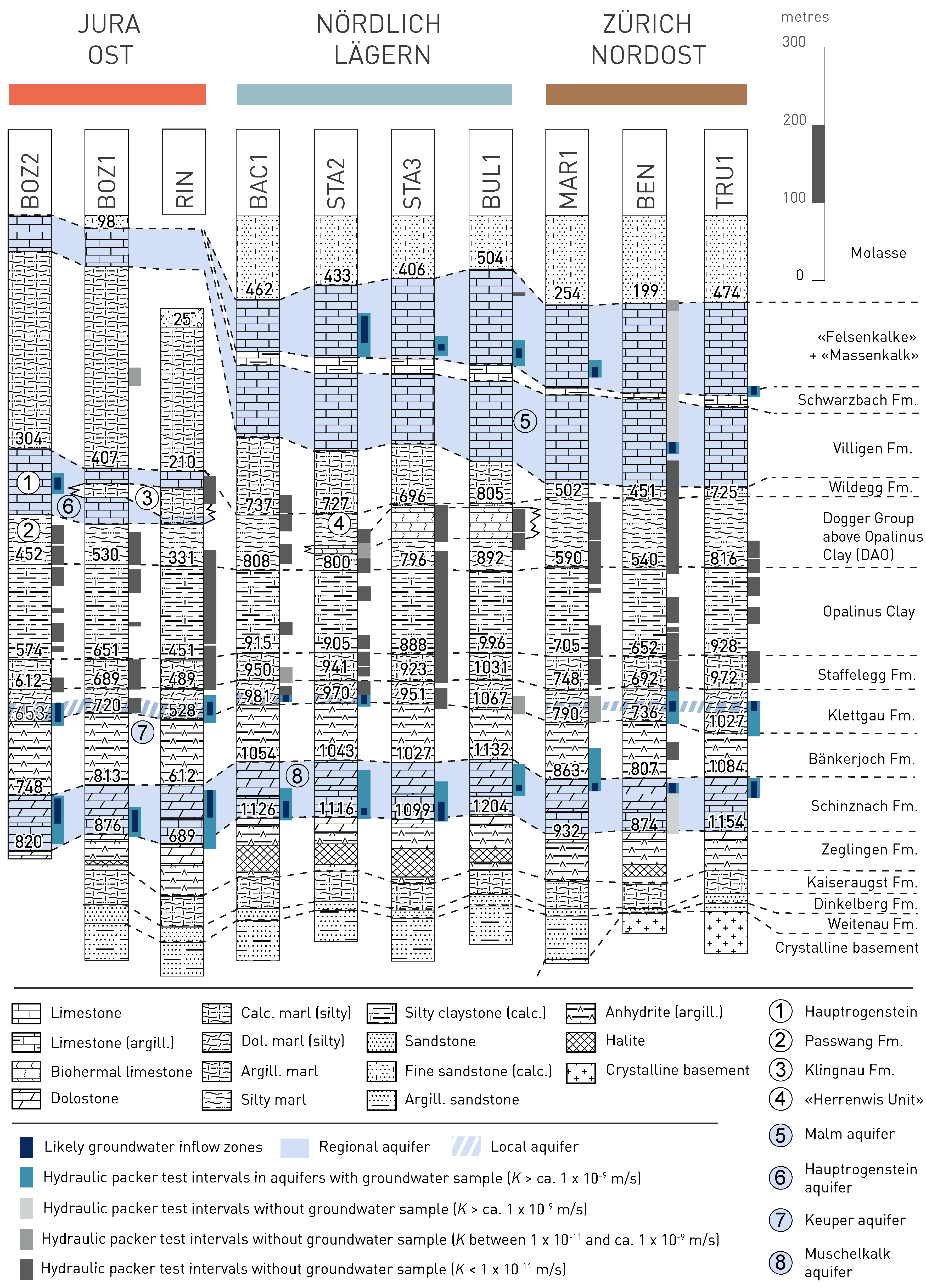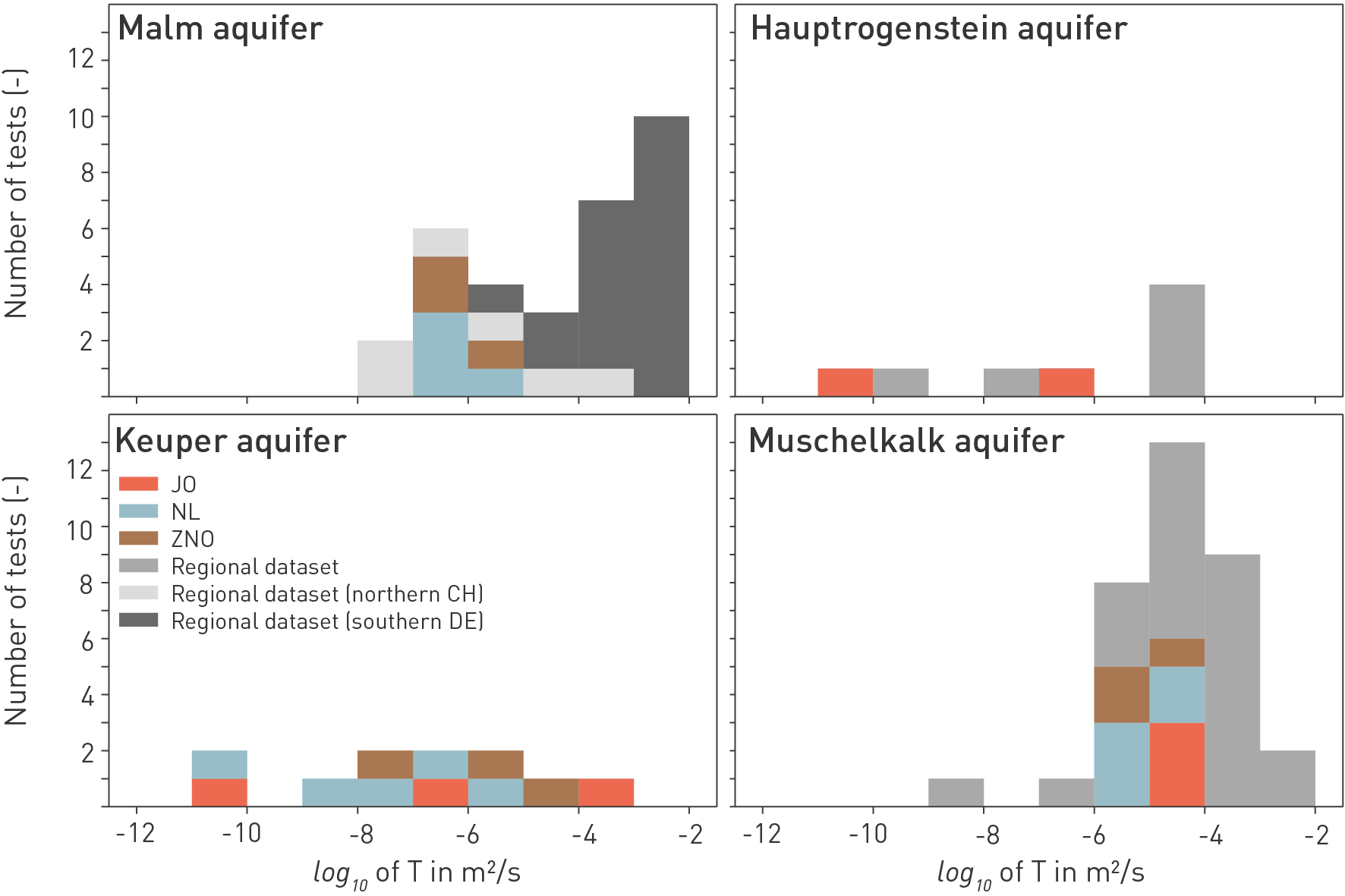The new TBO boreholes allowed the hydrogeological understanding of the siting regions and of the regional flow systems to be complemented and refined (Fig. 4‑85). Elevated hydraulic conductivities were observed as expected in the regional Malm and Muschelkalk aquifers, which in most cases allowed for groundwater sampling. The Hauptrogenstein aquifer is only observed in Jura Ost and is affected by a facies transition (details in Section 4.2.7). Transmissive lithofacies of the local Keuper aquifer were tested in several boreholes and groundwater sampling was partly feasible. The existence of the Keuper aquifer is evident in many natural tracer profiles (Section 4.6).
The transmissivities observed in the different aquifers reflect their lithological variation, structural overprint and indicate their hydrogeological importance (Fig. 4‑86). The transmissivities observed in the Muschelkalk aquifer are comparably uniform in the siting regions and about one order of magnitude higher than in the Malm aquifer. Groundwater residence times also reflect this (Section 4.5.5). In contrast, the observed transmissivities in the Keuper aquifer scatter over eight orders of magnitude.
Between these aquifers, the mostly clay-mineral rich rocks are characterised by low hydraulic conductivities. The units directly above and below the Opalinus Clay include so-called "hard beds" which were controversially discussed in earlier project phases (e.g. Nagra 2014f; see also Section 4.2.7). Intensive testing of the TBO boreholes provides no evidence that these "hard beds" allow for larger-scale groundwater flow.

Fig. 4‑85:Hydrogeological correlation of key boreholes with summarised results of hydraulic packer tests and location of regional and local deep aquifers
Correlation of the Keuper aquifer in JO and ZNO additionally takes profiles of natural tracers into account (see Section 4.5.3.10 for details). The likely groundwater inflow zones within the test intervals were identified based on e.g. drilling fluid losses, observations on drill cores and image logs or – where available – on fluid logging.

Fig. 4‑86:Histogram of the transmissivities measured in the aquifers
The displayed dataset of the regional aquifers includes results of hydraulic tests carried out inside and outside the siting regions. The latter is referred to as the regional dataset. For the Keuper aquifer, test data from the siting regions are shown. The highest transmissivity is shown for boreholes where more than one test per hydrogeological unit was performed (e.g. to estimate properties of different members of the Klettgau Formation). Note the large variability of the transmissivities for the local Keuper aquifer, particularly compared to the regional Muschelkalk aquifer.

